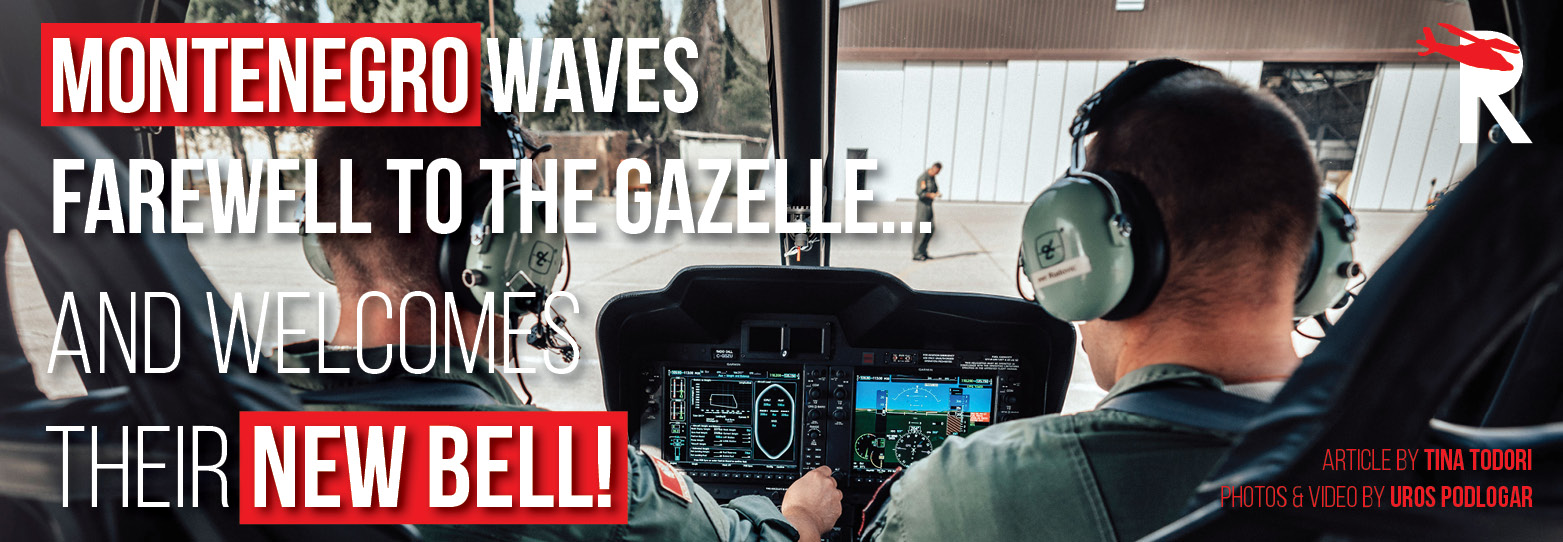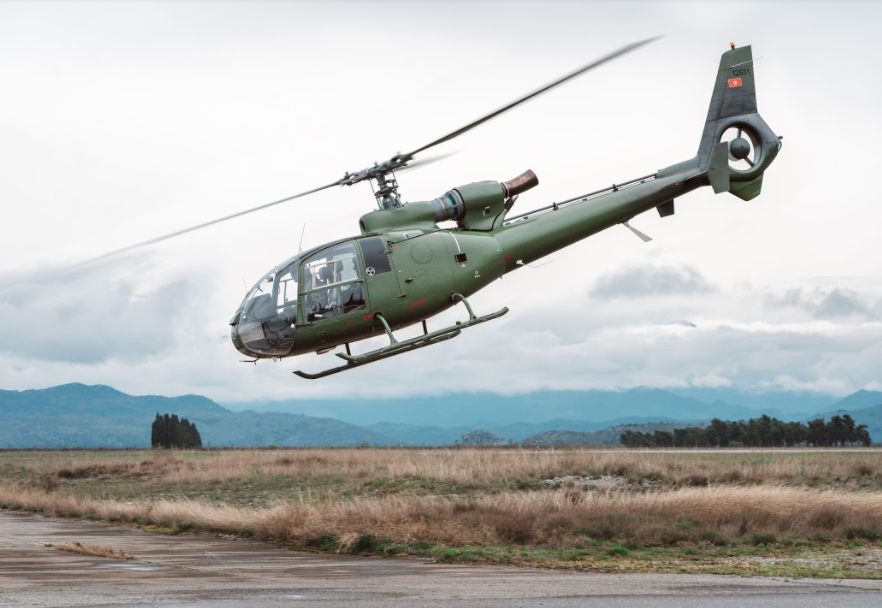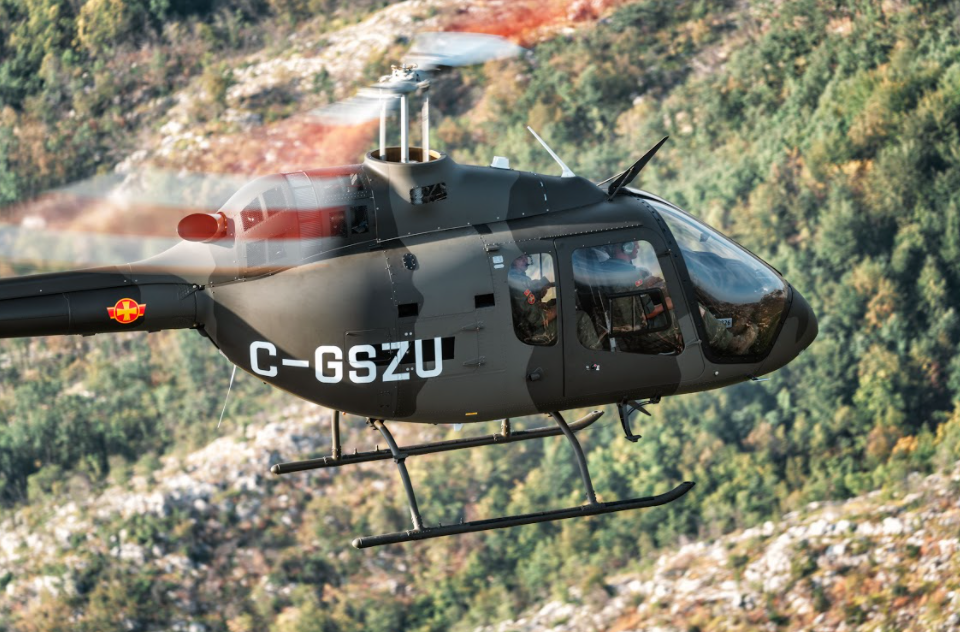|
Feb
01
2021
|
|
Posted 4 years 338 days ago ago by Admin
|
|

VIEW VIDEO
Montenegro is a petit country in Europe with perhaps one of the most interesting histories among the Balkan countries. It is definitely the youngest of the Balkan nations as its independence was regained in 2006.
Going through numerous political situations, Montenegro’s capital city, Podgorica, has been renamed a couple of times, going from Podgorica to Titograd (named after the former Socialist Federal Republic of Yugoslavia’s leader Josip Broz Tito) and after the formal break-up of Yugoslavia, going back to its prior name Podgorica. The city is also where the Montenegrin air force is based.
Small Air Force with Big History
The Montenegro Air Force inherits a tradition from a unit that was formed at the end of World War II, exactly on 25 December 1944 as an interceptor regiment. From 1944 to 1968, the unit was relocated several times, moving from Cerklje, Slovenia, to Zadar, Croatia, and finally in 1968 it was relocated to Titograd (today's Podgorica).
In 1992, it began training helicopter pilots. During its history the helicopter unit trained more than 1,400 cadets. In 1994, Montenegro was the largest air force unit in the Balkans, and consisted of six squadrons (four fixed-wings and two rotary wings) and had two acrobatic teams. “Today, the Montenegrin air force consists of one mixed squadron, the Air Operations Center, and the Force Protection Platoon,” says Air Force Commander, Lt. Col. Bojan Blagojevic.
They still have some older “Gazelles” parked in their hangars. “Helicopter Gazelle is one of the most successful and reliable helicopters in the world,” says Major Goran Sencic. “We have trained all of our helicopter pilots on it and we got some really great experiences from that platform. It is an excellent platform for base and advanced flight training and it has also proven to be a good attack helicopter. It has been used in anti-armor combat using an SA-3 Sagger, the wire-guided missile.”

Blagojevic further explains, “The Gazelles proved to be an excellent training platform when our first pilots successfully completed the type ratings on the Bell 412 in Bell Training Academy two years ago. They transferred to the B412 directly from the Gazelles. We will keep Gazelle in our memories as a great helicopter.”
“Now, it is time to create a high quality new fleet for our pilots,” says the Minister of Defence, Predrag Boskovic.
New Bell Ringing
“The reason we started investigating the Bell 505 was because our previous fleet of Gazelles was about 35 years old and had justifiably retired. As we worked with Bell Helicopters in the past, we decided to continue working with them for the new segment of helicopters we need for military training and search and rescue,” explains Boskovic.
With the new 505 on their fleet, they currently have four helicopters in operational use – a Bell 412EP, two Bell 412 EPIs, and the newest Bell 505. They also have a twin-engine Cessna 421B fixed-wing in operational use. The Ministry of Defence indicates that next year, they will add one more Bell 505 to the fleet.
Montenegro is known as an easy-going country. A Montenegrin tongue-in-cheek saying is: “If you have the urge to work, sit down, wait, and you’ll see it pass.” The Helicopter Unit does not do that. Blagojevic says, “Our main business is maintaining an optimal level of combat readiness and active cooperation with allies and partners, performing surveillance and protection of the sovereignty of Montenegrin airspace, providing air support to the armed forces of Montenegro and partner countries, and we providing support to Montenegrin civilian institutions. In our facilities, we offer logistic support to allies and partners, such as standing positions for aircrafts on our military apron, refueling and APU (on request), classroom and office spaces, and accommodations for up to 35 people, medical support, and weather services. Of course all these mentioned capacities are in use by our own Montenegrin air force.”
The Montenegrin helicopter unit consists of 25 pilots. When asked what was their most interesting pilot experience, they agreed it was the procurement of the new Bell 412 helicopters and their first flights on the platform. However, the Bell 505 also left a positive impression with Major Goran Sencic, He says, “My first contact with the Bell 505 was in France. We decided on the 505 due to its price, quality and the technical specifications such as the FADEC and modern avionics. Up to this moment, it is exceeding our expectations!” He adds that the Bell 505 will be used in different ways for military training, and will also be used in supporting light transport and in transporting special teams.
When asked about why they chose this specific model, Sencic explains, “When we were deciding on a new trainer and looking at the Bell 505, the main goal was to be able to adapt to fly the Bell 412EPI and decrease the adaption time. It is important in the initial training phase to decrease workload, allowing more time for other decisions.”
An important factor was also the FADEC. “A FADEC isn't usually provided in light helicopters and that is what sets the Bell 505 apart from others,” says Sencic.
The Ministry of Defence explains, when taking into consideration which helicopter to buy, maintenance requirements and parts availability is equally important to the helicopter’s qualities. Bell Helicopter's services are also on point in this area. “We have maintenance platoons in our mixed squadron, which perform maintenance on the Bell 412 and Bell 505. We perform line- and base-level maintenance for our platforms. Depot-level maintenance is provided by Bell Helicopter official service centers,” says Blagojevic.
Currently Montenegro technicians are training in the unit as well as abroad in official Bell Helicopter training centers.

Mountains and Flamingos
Although it’s known as a stunning summer destination because of its sun-drenched beaches, Montenegro is named for its mountains – “monte” means mountain. Not only does the nation have amazing mountains, it also has the largest lake in Southern Europe, Lake Skadar, which is home to over 270 bird species, including pink flamingos. Yes, who would have thought that a small European country is home to such exotic birds.
Montenegrin mountains, stretched lakes and 293 kilometers of beaches give this country a flight training advantage. Montenegro has approximately 270 flight days per year, from which 180 are sunny with clear skies. This allows continuity in flight training: VFR, IFR, and NVG flying. Also with a variety of temperatures, heavy wind conditions, and high altitudes it provides excellent conditions for basic and advanced training for helicopter pilots in extreme climate conditions, ranging from -40º C in winter in the mountains, up to 45º C during the summer.
Montenegro may be geographically small, but the people make it one of the most open, kind-hearted, and in all honesty, hardest working nations. They yearn to grow and expand their capabilities, knowledge—and air fleet. “There is a plan for procuring two additional Bell 505s, which will replace the Gazelle helicopters for basic and advanced training,” explains Bloagevic. “We will continue with our training of the new crews for the Bell 412 and also continue to increase capabilities for the maintenance of all our platforms. We intend to increase the operational capabilities of the mixed squadron in accordance with the capabilities of the B412 platform. And to sum it up, we plan to participate in exercises with our allies, partners, and deploy the helicopters and crews in NATO-led operations.”
VIEW VIDEO